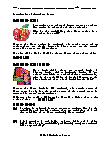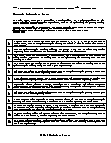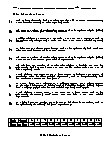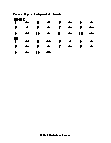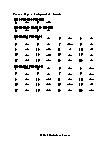Independent Events Worksheets
What are Independent Events in Probability? Probability tells us the likelihood of an event taking place or not. It is represented between numbers 0 and 1, with 1 showing certainty and 0 representing impossibility of occurrence of an event. If the probability is a number closer to 1, it represents a higher likelihood of happening. However, if the number is closer to 0, then the event has fewer chances of taking place. In probability, the event is defined as the outcome of the experiment. These events can be classified as independent events. Independent events are those events that occur freely of each other. In other words, the incidence of one event doesn’t hinder or affect the occurrence of another event. For example, the outcomes of two rolling dies do not depend on each other. The outcome of one die doesn't affect or change the outcome of the second die. Two events are independent if one or more of the following are true. P(A|B) = P(A) P(B|A) = P(B) P(A ∩ B) = P(A) P(B)
-
Basic Lesson
Introduces the fundamentals of Independent Events. Provides a basic application. Two cards are to be drawn from a standard deck of cards. Find the probability of drawing a jack and then a ten after replacing the jack.
View worksheet -
Intermediate Lesson
This lesson focuses on determining the outcome of Independent Events with word problems. Two numbers are selected from 1 to 16 at random. One number is selected and then replaced. What is the probability that first number is 4 and other is an odd?
View worksheet -
Independent Practice 1
Students practice with 20 Independent Events problems. The answers can be found below. A bunch of flowers contains 2 carnation, 3 roses and 6 sunflowers. Two flowers are picked from the bunch without replacement. Find the probability that pair of flowers picked from the bunch consists of first sunflower and then carnation.
View worksheet -
Independent Practice 2
Another 20 Independent Events problems. The answers can be found below. In a state, 50% of all people own a scooter, and 21% of all people have a scooter and bicycle. Find the probability choosing a person that has scooter and then choosing another person sequentially who has a bicycle and scooter?
View worksheet -
Homework Worksheet
Reviews all skills in the unit. A great take home sheet. Also provides a practice problem. A number cube has 6 sides. The sides have the numbers 2, 3, 4, 5, 6, and 7. If the cube is thrown twice, what is the probability of rolling the number 5 then in second roll number 2 will appear?
View worksheet -
Skill Quiz
10 problems that test Independent Events skills. What is the probability that a randomly selected 1 to 20 number is divisible by 2 and then divisible by 11 after replacing first?
View worksheet
Full of What?
The next time someone tells you the world is full of feces, they may be right! The world's population excretes more than 17,941,000 tons of living being biological waste every single year! Amazing!

